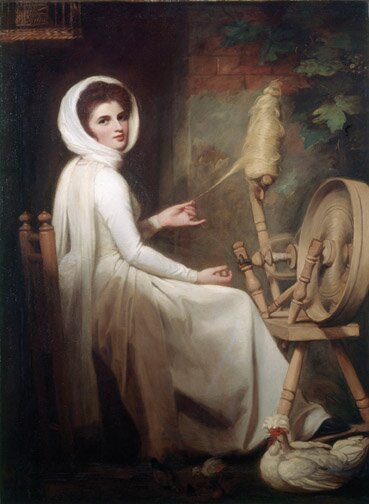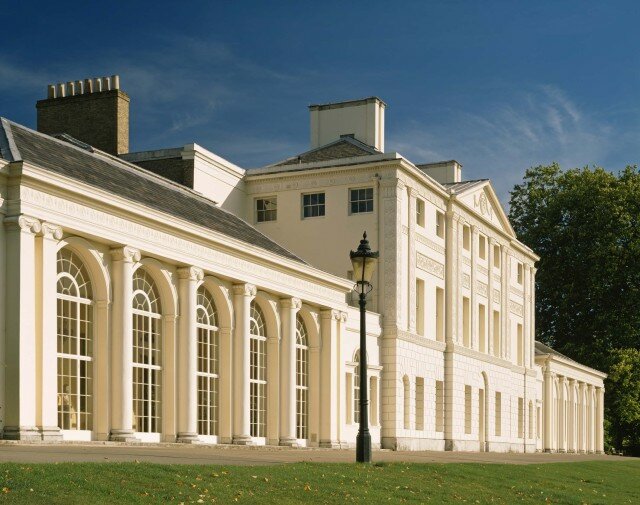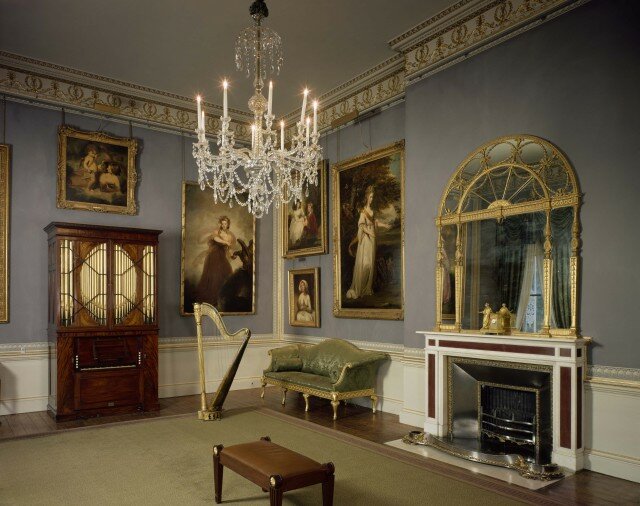How kind of the Seattle Art Museum! With seemingly, the whole civilized world hurtling towards its end (or rather the season-ending episode of Downton Abbey), SAM has whipped up a charming exhibition of paintings that Lord and Lady Grantham would have proudly displayed in their fine home.
Rembrandt, Van Dyck, Gainsborough: The Treasures of Kenwood House, London (opening at SAM February 14 and running through May 19) features 50 works of art from one of the great houses of England. It’s a tasty and representative look at the kind of art that, well, the owners of the great houses in England would hang in their luscious, well-appointed rooms while legions of servants served lavish meals and dressed their charges in wonderful gowns.
Organized by the American Federation of Arts and English Heritage, the exhibit over-promises in one area: there is only one Rembrandt, though it’s a good one. The late self-portrait shows an aged, tired face but still gives a hint of the artistic fire that drove the great artist. The collection on view was built by and donated to England by Edward Cecil Guinness, (1847–1927), the first Earl of Iveagh and heir to the Guinness Brewery.
The paintings hearken back to a time in the 17th and 18th centuries when the great lords and ladies of England paid hard-working and ambitious society painters to portray them in their best light, in clothes that are as fancy as all get out. It’s not unusual to see subjects dressed as Greek gods or characters from Shakespeare.
Much later, in the 1800s, collectors like Guinness bought these paintings to decorate their stately homes. Watching Downton Abbey, which is largely filmed at Highclere Castle an hour north of London, you can see many paintings very similar to the ones on display at SAM. Indeed, the lovely painting in the Grantham’s dining room, behind the sideboard where breakfast is served, is a huge painting by Van Dyck, a famous society painter whose work is amply featured in this SAM exhibition.
One of the many themes of Downton Abbey is the fall of the aristocracy. This exhibition has an elegiac feel, like a dream that is just out of reach. Treat yourself to a visit to SAM to see how an earlier times’ 1-percent lived.
The sheer size of these massive portraits, though, poses a problem for the museum: Hung on bare stretches of wall, presented as a series of individual paintings, these bulky works look strangely out of context. Smarter to have recreated rooms with overstuffed chairs, chandeliers, and windows, and to have displayed the works salon-style (stacked one on top of the other) as they are seen in situ at Kenwood or Highclere. There, they become part of a house’s mise-en-scène, part of the overall décor. It is in this kind of setting that such paintings give off emotional heat and a sense of history.
Despite this miscalculation by SAM, it’s a free-ranging, frolicking group of works, much more fun to see than anyone might expect, akin to going through old photo albums of the rich and famous. These works ask not for your intense contemplation, but rather show the privileged men, women and children of their time enjoying their privileges and, frequently, their cherished dogs.
Yet several works stand on their own. Kitty Fisher as ‘Cleopatra’ by Joshua Reynolds is an excellent work of art. Reynolds, who is represented by many pieces in the exhibition, was a rival of Gainsborough and to my mind his equal. To redress history’s slight, he should have been a named party in the title of this exhibition.
Close by, artist George Romney painted Emma Hart, the future Lady Hamilton, as The Spinstress. Lady Hamilton was one of the great beauties of her day, and a woman who used her beauty for power and title. Nearly every Lord of her time tried to — or in fact succeeded — in seducing her. Even the artist fell in love with her. Romney painted her portrait dozens of times and often kept the portraits in his studio. He had to settle, it seems, for the paintings because historians now believe he never became her lover.
In The Spinstress, Lady Hamilton is painted in an all-white dress next to a spinning wheel, a tool I can promise you she rarely saw and never used. But in her face, painted with obvious love and care, you can see the eyes that broke Lord Nelson’s heart.
There is also a fine, early JMW Turner, an artist beloved in England and seen too rarely in Seattle, and a series of children’s portraits that demonstrate all too well that we don’t raise kids like that anymore.
One thing SAM is always good at is beefing up their traveling exhibitions with a full slate of events. In conjunction with the Kenwood House exhibition, SAM is showing The Treasures of Seattle, a fine series of European paintings from local Seattle collections. The highlight is a wall of delicate still life paintings, again, meant to be part of a room’s décor.
SAM is showing three magnificent films to accompany their joint exhibitions. Stanley Kubrick’s Barry Lyndon (1975), is a polarizing film that critics either love or hate. But it is well worth your time, truly one of the most beautiful films ever made. Also screening are The Innocents (1961), a Deborah Kerr masterpiece about ghosts in a stately manor; and, Gosford Park (2001) the Robert Altman film that directly led to the production of Downton Abby. It was written by Downton creator Julian Fellowes and stars the great Maggie Smith.











